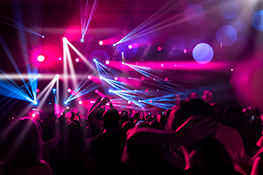Transform Your Stage: Stunning Lighting Designs That Will Wow Your Audience
The Power of Light: Setting the Mood and Enhancing Your Performance
Lighting is more than just illumination; it’s a storytelling tool, a mood-setter, and a crucial element in captivating your audience. A well-designed lighting scheme can transform a simple stage into a breathtaking spectacle, enhancing the emotional impact of your performance and leaving a lasting impression on viewers. This article explores innovative lighting design techniques to elevate your stage production to new heights.
Understanding the Fundamentals: Color, Intensity, and Movement
Before diving into complex designs, understanding the basics is paramount. Color psychology plays a vital role; warm colors like oranges and reds evoke feelings of warmth and excitement, while cool colors like blues and purples create a sense of calmness or mystery. Intensity, or brightness, is equally important, allowing you to highlight key moments and create dramatic contrast. Finally, movement—through the use of moving heads, scanners, or even subtle changes in intensity—adds dynamism and visual interest, keeping the audience engaged.
Creating Dramatic Impact: Spotlights, Wash Lights, and Gobos
Different lighting fixtures offer unique capabilities. Spotlights, with their focused beams, can pinpoint actors or key objects, drawing the audience’s attention. Wash lights provide a broader, more even illumination, setting the overall mood and ambiance. Gobos, metal templates placed in front of lights, project patterns and shapes onto the stage, adding texture and visual interest. Strategic use of these fixtures allows for a layered and sophisticated lighting design.
Beyond the Basics: Advanced Lighting Techniques
Exploring advanced techniques can elevate your productions from good to exceptional. Techniques like backlighting can create depth and separation, while side lighting can add drama and dimension to the performance. Color mixing allows for a seamless transition between different moods and atmospheres. Furthermore, exploring techniques like silhouette lighting and using LED lighting with its endless color possibilities can add significant impact.
The Role of Technology: DMX Control and Lighting Consoles
Modern lighting technology offers incredible control and precision. DMX (Digital Multiplex) control systems allow for the synchronized operation of multiple lighting fixtures, enabling intricate and dynamic lighting shows. Lighting consoles provide a centralized interface for programming and controlling these effects, allowing for complex sequences and pre-programmed cues. Understanding these technologies is crucial for creating sophisticated and seamless lighting designs.
Designing for Different Genres: Adapting Your Lighting to the Performance
The ideal lighting design varies greatly depending on the genre. A musical might require vibrant and energetic lighting, contrasting sharply with the subtle and atmospheric lighting needed for a dramatic play. Similarly, a comedy might benefit from bright and playful lighting, whereas a horror production might use dark and moody lighting to create suspense. Understanding the specific needs of each genre is key to crafting an effective lighting scheme.
Tips for Choosing the Right Lighting Equipment
Selecting appropriate lighting equipment is essential for a successful production. Consider factors like the size of your venue, the type of performance, and your budget. Investing in high-quality fixtures, even if it means starting with a smaller selection, will pay off in the long run. Prioritize versatility, ensuring your equipment can be adapted to various productions and lighting designs.
Conclusion: Illuminate Your Vision
With careful planning, creativity, and the right equipment, your lighting design can truly transform your stage and captivate your audience. By mastering the fundamentals and exploring advanced techniques, you can create stunning visuals that enhance the emotional impact of your performance, creating a truly unforgettable experience for your viewers. Remember to always consider the overall story you want to tell and let your lighting design complement and enhance it.


 Auditorium Construction Services
Auditorium Construction Services 